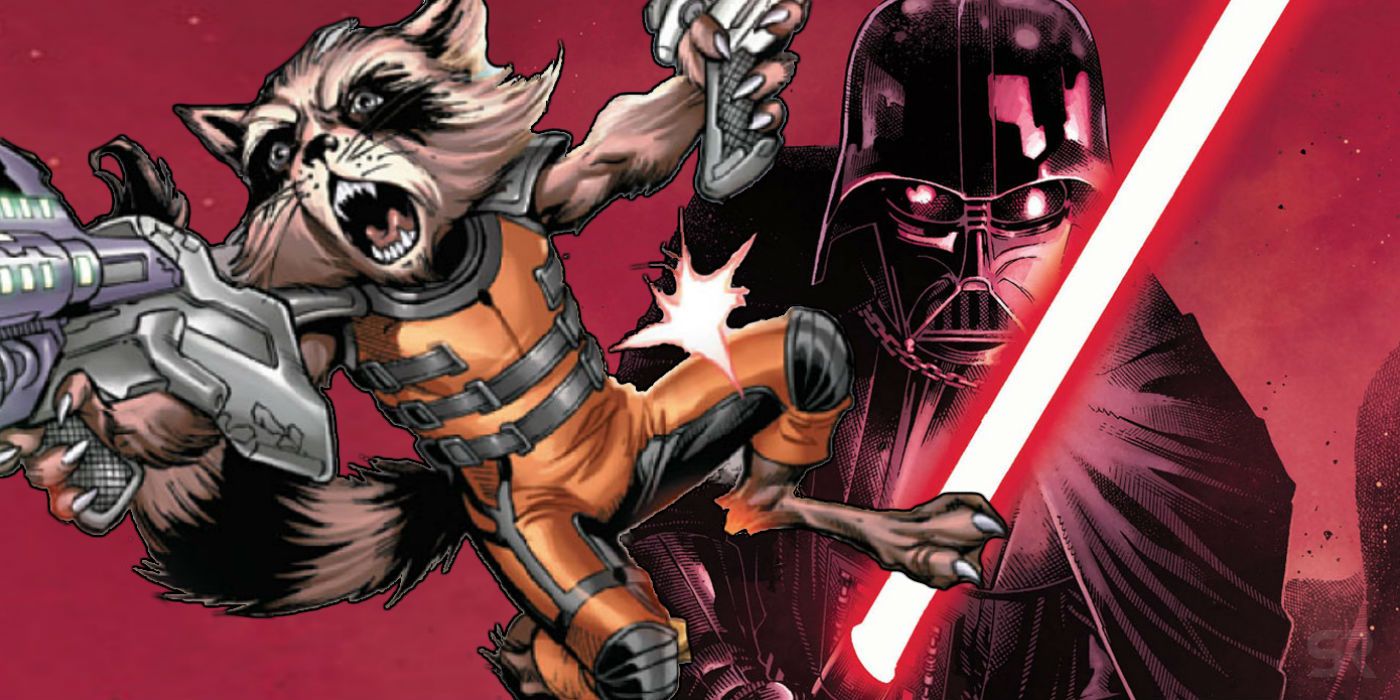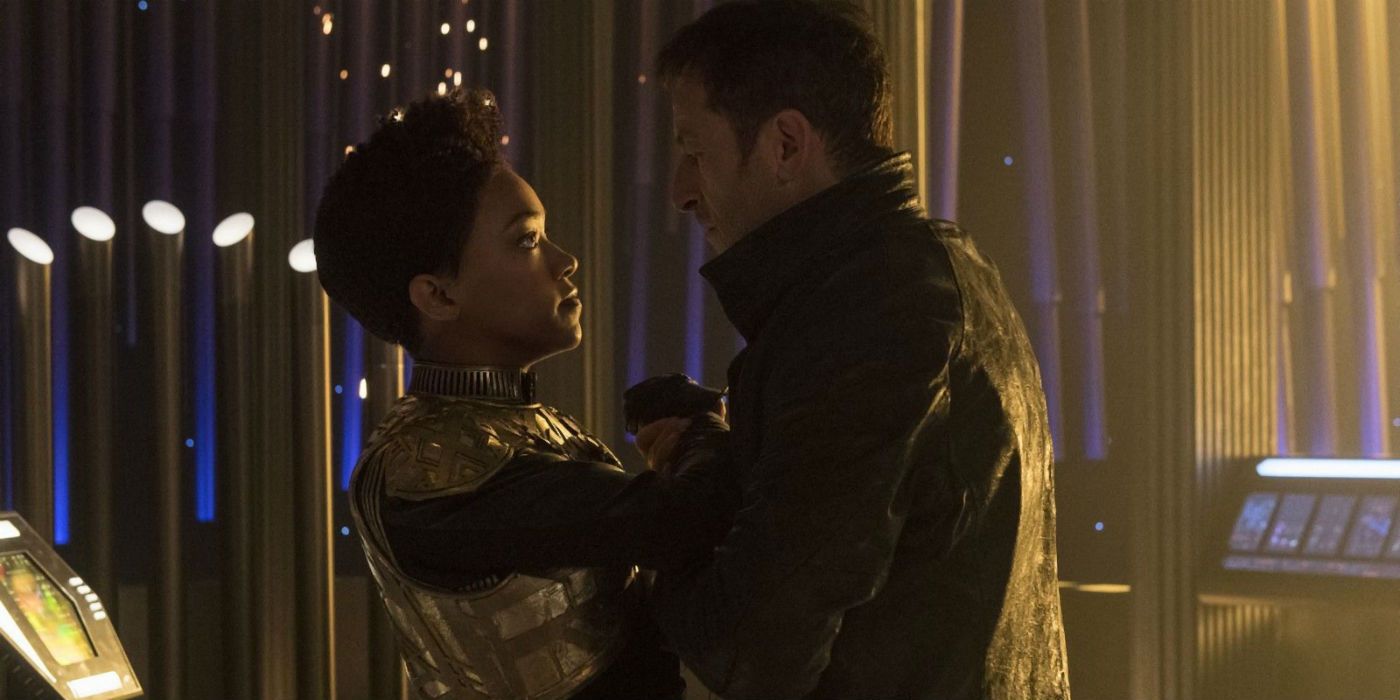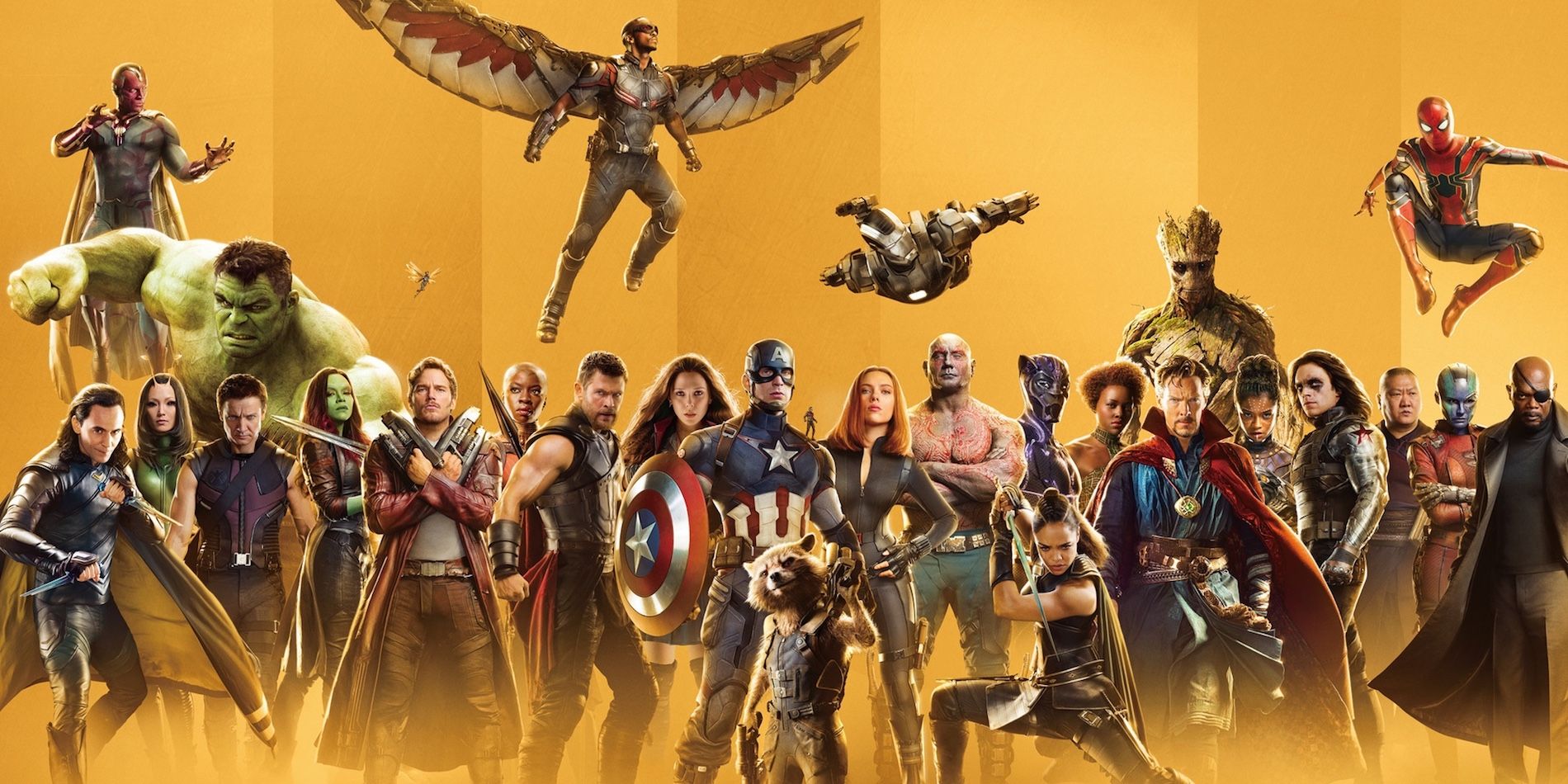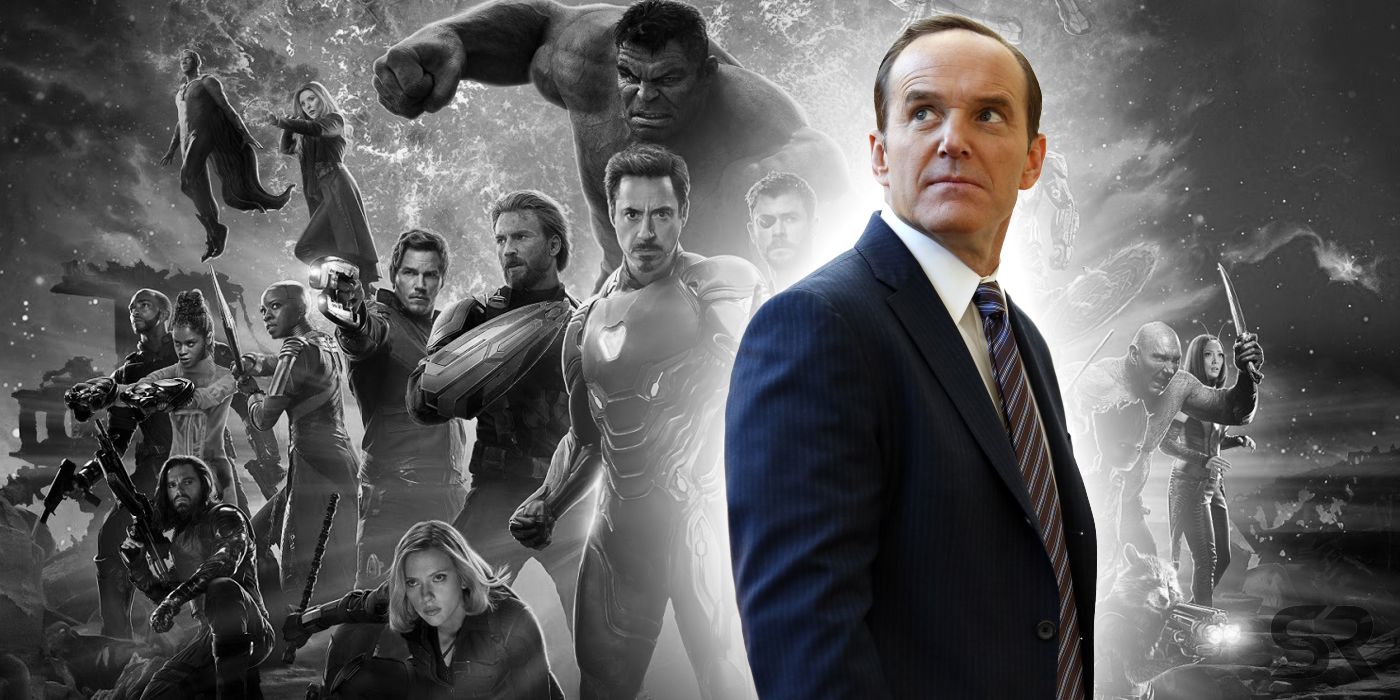
The cinematic universe model is all the rage in Hollywood, but only two studios are really flourishing because of it: Lucasfilm and Marvel. Surprisingly, the two Disney subsidiaries take a very different approach when it comes to managing their respective universes.
When most viewers think of Star Wars or the MCU, they think of movies. In reality, both franchises are far more than just a range of blockbuster films. The Star Wars canon includes a wide range of ongoing tie-in comics, popular animated series, and even New York Times bestselling novels. The MCU includes a number of official comics too, as well as a staggering number of live-action TV shows. Both cinematic universes are expanding at an incredible rate, even discounting the movies; several Star Wars comics are released every single month, while Marvel Television drop new seasons of their shows throughout the year.
Related: A Complete History Of The Marvel Cinematic Universe
This ultimately means that both Lucasfilm and Marvel Studios are faced with the same challenge; how do they coordinate this content, and ensure there's a sense of continuity between everything that's set in the same universe? Or, to put it more bluntly, how do they manage the canon?
- This Page: How The MCU Changed The Game
- Page 2: Marvel's Approach vs. The Star Wars Approach
How Movies Traditionally Handled Expanded Continuity

There's nothing new about movie tie-ins, whether we're talking about novelizations that expand upon a film's plot, or official comics and books that are ostensibly set in the same universe. But, in general, this kind of content has been viewed as useful for marketing purposes, or else as just another revenue stream. Few franchises have attempted to absorb the other mediums into their canon.
There are good reasons for that. The first is that a movie will be watched by far more people than pick up any of the tie-ins. Indeed, depending on the marketing approaches and licenses, the tie-ins may not even be published or aired in all the territories the film releases in. That means it's not wise to tie the different mediums together too tightly. The tie-ins should be seen as an optional extra, something that the dedicated fans can pick up if they want to continue enjoying the franchise, rather than being baked into the continuity. That's why the countless Star Trek novels are viewed as non-canon.
The second reason is that tie-ins can prove too restrictive for writers and directors, especially when dealing with a shared universe model. In a shared universe, everything has a potential impact upon the rest of the franchise. But the more things that are part of the canon, the more complicated this becomes. It's not hard to imagine a scenario where a writer's creativity is inhibited by a plot that took place in a tie-in comic published a decade ago - one that's mostly been forgotten by fans. For these two reasons, then, film and TV franchises have traditionally ignored the expanded continuity... That is, until Marvel Studios launched the MCU.
Related: The Shared Universe Craze May Already Be Dying
How The MCU Changed The Game

Marvel takes a two-tier approach to the canon. On the one hand, you have the movies themselves, which are expected to (mostly) work together. It's true that there are occasional continuity problems between the films. Sometimes they're the result of a simple mistake, sometimes they're because a writer or director decided they wanted to do something different. In general, though, there's a fairly strong sense of continuity between the movies, and they can be considered the highest level of canon.
Then you have the tie-ins, specifically the comics and TV shows. These are sometimes referred to as the wider MCU, in order to differentiate them from the films. They exist within the same world, explore concepts and even characters that have appeared on the big screen, and frequently reference the movies, but the relationship only works one way. Because fewer people watch or read these than go to the box office, the movies themselves ignore these tie-ins. That's why Agent Coulson may have been resurrected in Agents of S.H.I.E.L.D., but Clark Gregg won't be doing another cameo in a Marvel movie set in the present; as far as the films are concerned, his character might as well have stayed dead. Fans may not like this, and even the TV actors have protested against it, but by this point it's essentially baked into the design of the shared universe.
But it's important to understand how continuity works in terms of the wider MCU. The tie-ins are indeed part of continuity - right up until the moment they're not. The films are not restricted in any way by the TV shows or comics, so writers and directors are free to contradict them, effectively removing them from the canon at a whim. So far, that hasn't happened particularly often, but as the canon continues to grow it will become increasingly common. Last year's Guardians of the Galaxy Vol. 2 presented a very different backstory for Nebula to the one seen in 2014's Guardians of the Galaxy Prelude comic. There's already evidence that next year's Captain Marvel will contradict both the same prelude comic and the 2009 digital tie-in, Nick Fury: Spies Like Us.
Page 2 of 2: Marvel's Approach vs. The Star Wars Approach

Star Wars' All-Inclusive Approach
Lucasfilm had traditionally taken a similar approach to Marvel, but in 2012 they were purchased by Disney, and were given the opportunity to redraw the Star Wars franchise's continuity. Execs decided to erase the old Expanded Universe altogether, and only a handful of projects associated with George Lucas - the films, the Clone Wars TV series, and a handful of episode adaptations - were retained as part of the canon. But from that point on, Lucasfilm established that everything else would be equally canon. Every tie-in novel, every comic, and every episode of an animated TV show would be just as much part of the Star Wars galaxy as the movies themselves. Lucasfilm formed a so-called "Story Group" to act as gatekeepers of the canon, carefully monitoring everything that happens to try to keep continuity in line.
At its best, this has allowed Lucasfilm to tell a single narrative that runs across different media. This was most effective with Rogue One, which saw Forest Whitaker play the part of Saw Gerrera, a character that had been introduced in the Clone Wars series. The film was supported by a prequel novel, Catalyst by James Luceno, and Alexander Freed penned a superb novelization. The books combined seamlessly with the movie to spell out the full history of Palpatine's Death Star project; meanwhile, when Rogue One proved a box office hit, the film was followed up by more tie-in novels, several comics, and the return of Saw Gerrera in Star Wars: Rebels. Lucasfilm's approach to canon had been proven remarkably successful.
Related: A Complete History Of The Star Wars Universe
There are, however, several problems with this model. The first is that Rogue One seems to have been an exceptional case; the tie-ins for The Last Jedi were relatively uninspired, and several were arguably misleading, encouraging fans to believe characters like Snoke were more significant than they proved when the movie was released. Behind-the-scenes drama on Solo appears to have damaged that film's tie-ins as well; Last Shot by Daniel Jose Older was frankly irrelevant, even though it was touted as an official movie tie-in. It's clear that coordinating a single story across multiple franchises requires a high degree of focus from the studio, likely the writers and directors as well, and that's simply not always possible. A second problem was demonstrated by Solo too. The unexpected Darth Maul cameo made perfect sense to viewers who'd watched Star Wars: The Clone Wars and Star Wars: Rebels; but it was absolutely meaningless to the vast majority of moviegoers.
The most significant issue is that this model probably won't be sustainable. The canon is building at a fantastic rate, and it will be increasingly difficult for the Story Group to keep track of all the details. Smaller contradictions are already beginning to build up. Meanwhile, creative ideas will become restricted because they don't fit with established canon. Right now, Charles Soule's Darth Vader series is revealing the secret history of Vader's fortress on Mustafar. But what if, in five years' time, a filmmaker has a stunning idea that explores a similar concept? They'll potentially be unable to do so, because of a comic book published years ago that won't have even been read by the majority of Star Wars fans.
Which One Is The Best Approach?

Lucasfilm's approach depends upon the idea of a dedicated Story Group, who carefully monitor continuity across the different mediums. That approach isn't one that could work with the MCU. Back in 2015, behind-the-scenes drama led Disney to split Marvel Studios away from the rest of Marvel Entertainment, meaning they're now separate Disney subsidiaries. The movies are made by Marvel Studios, the TV shows by Marvel Entertainment, and it's unlikely the two could cooperate enough to establish a similar Story Group that oversaw continuity. The relationship between Marvel Studios and Marvel Entertainment does seem to have improved over the course of the last year, but not by that much.
Curiously, both franchises have now faced the same challenge; what to do with a character who was killed in a movie, but resurrected in another medium? In the case of the MCU, Agent Coulson was killed off in 2012's The Avengers, but resurrected in Agents of S.H.I.E.L.D.. In 2015, Joss Whedon was presented with an opportunity to use Coulson in the sequel, Avengers: Age of Ultron. He chose not to do so; he felt it undermined Coulson's death, and would utterly confuse the majority of viewers who didn't watch the TV shows. In contrast, for Star Wars the character of Darth Maul was killed off in Star Wars: The Phantom Menace, but was resurrected in the animated shows. Lucasfilm actually chose to use the character in Solo, irrespective of whether or not most moviegoers would be confused. These two decisions highlight the difference in terms of the two approaches to canon. It's a matter of record that most viewers were utterly bewildered by the Maul cameo, proving that Whedon made the right call, and raising difficult questions for the Star Wars approach to canon.
The fundamental question is this: Which approach has the best chance of working out in the long run? Lucasfilm's seems like a smart move in the short-term, but as the canon builds it will prove very difficult indeed to keep it up. In contrast, Marvel's is sustainable. The two-tier model of canon allows Marvel Studios the freedom they need to make the best films possible without being constrained by other, lesser-known mediums. It will indeed sometimes mean that elements have to be written out of canon; so far it's only happened to two tie-in comics, but there could be a more significant impact if Agent Coulson's backstory in Captain Marvel differs too much to the one we've seen presented in dialogue and flashbacks in Agents of S.H.I.E.L.D.. No doubt that will frustrate the most hardcore fans, but Marvel Studios will consider that a price worth paying.
More: Avengers: Infinity War Corrects Marvel’s Broken Timeline
from ScreenRant - Feed https://ift.tt/2xchosX

0 Comments